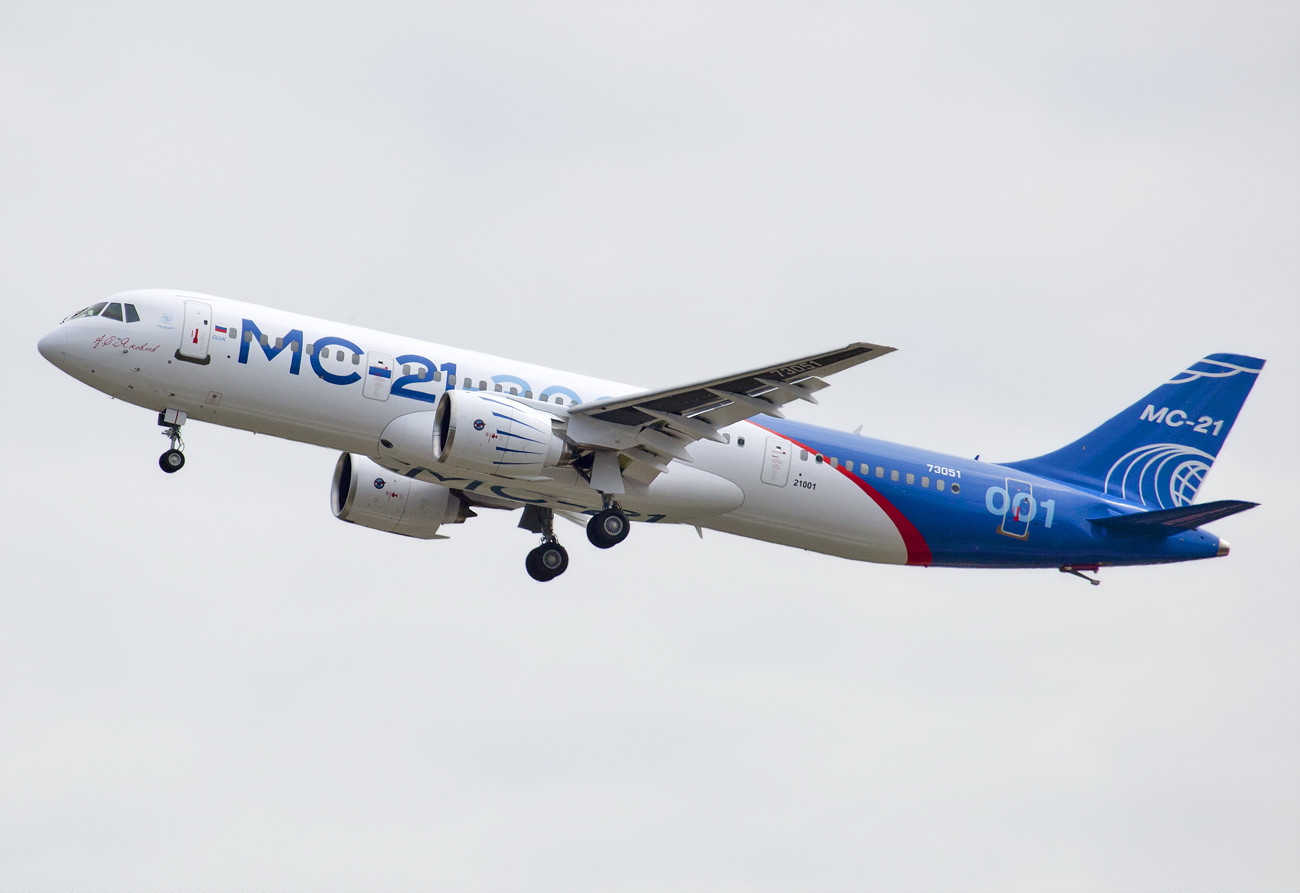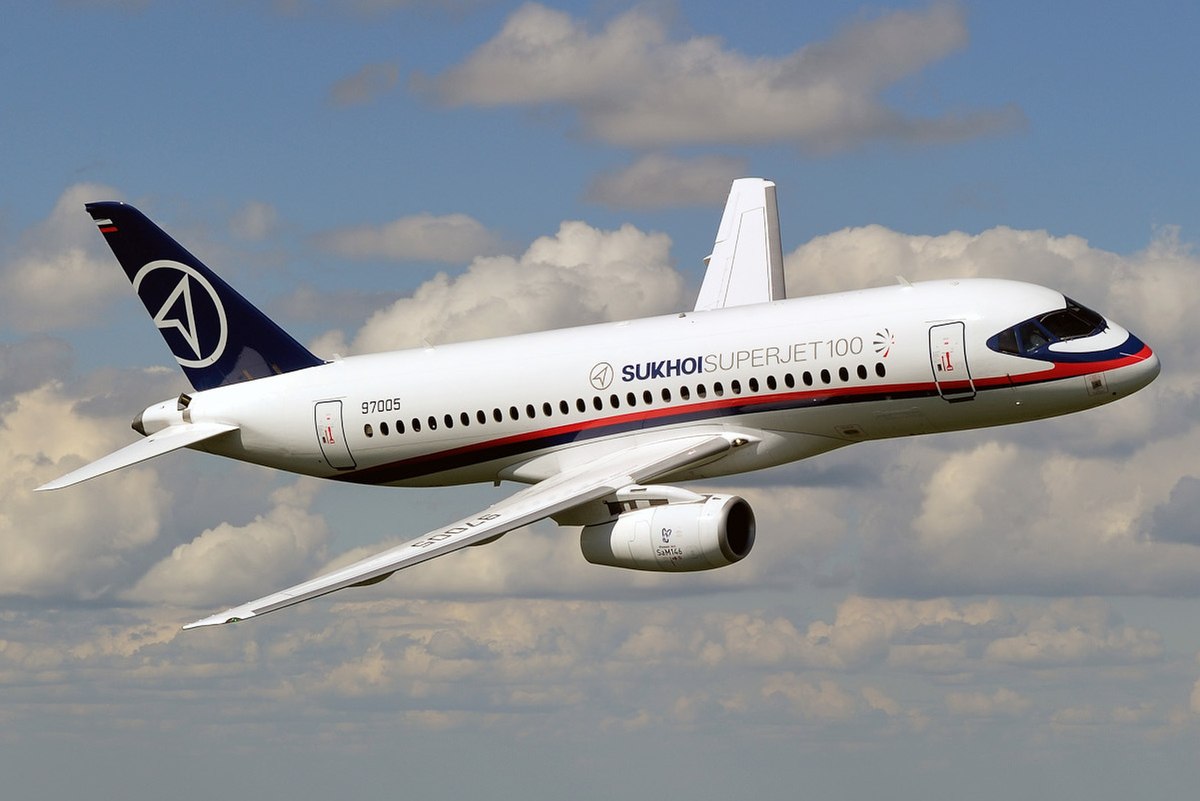Western sanctions preventing Russia from accessing many critical aerospace components; the sluggish pace of developing them within the country; those manufactured domestically holding back the aircraft’s expected performance; and the engagement of leading aeronautical engineers in the war effort have impacted the testing and deliveries of commercial passenger aircraft.
These are planes like the MC-21, Sukhoi Superjet SSJ-100, Tupolev Tu-214, and the Ilyushin Il-114-300 that Russia developed to connect the vast country and growing domestic aviation needs.
Although in a minor way, this is, in turn, affecting the larger effort to reinvigorate the domestic economy and make it more resilient to Western sanctions.
A Kommersant report noted that these issues have pushed deadlines for testing, certification, and serial production set in 2022. This would force Russia to continue to use foreign passenger aircraft from Airbus and Boeing in its civil aviation fleet, which it planned to retire soon.
Civil Aviation Revival was Key to Boosting Economy
EurAsian Times recently reported how Russian gas giant Gazprom is leading the revival of the Tu-234 commercial jet, presumably for its use as well as for the domestic passenger aviation sector.
The broader vision was to enhance connectivity across the massive landmass and reduce the dependence on Moscow as the main aerial transit to connect all major towns, as President Vladimir Putin noted in May 2016.

Having a fleet of various domestically-developed passenger aircraft in place of the older Soviet-era planes connecting remote regions with industrial regions and cities would foster greater movement of goods and people, boosting economic activity.
Domestic ‘Import Substituted’ Components
Mentioning the MC-21, SSJ-100, Tu-214, Il-114-300, and the Baikal, Kommersant said that the “aviation industry does not have time to test aircraft” as per “deadlines established in 2022.” Worse, their “characteristics do not correspond to those originally planned.”
For instance, the MC-21 became “heavier by 5.75 tons, due to which the range and altitude of its flight were significantly reduced,” according to “data” from the “manufacturer.” The plane has been developed by the Yakovlev Design Bureau (YDB).
This was due to the domestically developed sophisticated mechanical and electronic aerospace components and assemblies, which Russia couldn’t import from American and European companies. The government has called this a wide-ranging “import-substitution” effort.
This has, in turn, held back official certification for the aircraft from Russia’s civil aviation regulatory authorities, which sees potential safety issues. Unidentified officials in Russia’s aerospace sector also said that the ongoing war was drawing more industrial and manpower resources for military aircraft manufacturing, particularly qualified technicians and aeronautical engineers.
“The Ministry of Industry and Trade and the Rostec State Corporation officially announced that the SJ-100, MC-21, Tu-214, Baikal, and Il-114-300, developed to replace the Western fleet, would see deliveries in 2024. But the deadline has now been pushed to 2025-2026,” Kommersant said.
Solutions Considered
Russian carriers might, therefore, consider looking for “aircraft in friendly countries,” the report said. This suggests Russia will have to sub-lease aircraft, possibly from Central Asian nations, and route the import of spare parts from there, incurring tedious planning and administrative and logistical hurdles.
Another solution being considered is allowing foreign carriers to fly between Russian cities and work more actively with Russian companies under codeshare agreements. Lastly, an emergency measure to meet the capacity shortage would involve the Ministry of Transport “limiting” Russian airlines on “foreign directions (and) concentrating the fleet within the country.”
For its existing fleet of Boeing and Airbus planes, Russia had managed to import spares for a crucial navigation system made by Northrop Grumman, cabin pressure valves, cockpit equipment, temperature sensors, toilet bowls, screws, nuts, and even a Honeywell aircraft engine starter by bypassing sanctions.
These were procured from middlemen and intermediary companies in countries like China, Tajikistan, United Arab Emirates (UAE), Turkey, and Kyrgyzstan – countries that did not endorse the US sanctions on Russia. Between May 2022 and June 2023, at least $1.2 billion worth of aircraft parts flowed to Russian airlines, customs data showed.
This was a time when Russian companies managed to mitigate the impact of sanctions on its domestic aviation sector successfully by identifying new supply channels. It also stripped hundreds of foreign jets stranded in the country after the war began, as both Russia and European nations had impounded and seized each other’s aircraft.
However, it now appears that Russian planners find the practice largely unsustainable in the long run and desire a self-reliant domestic aviation sector, as it anticipates strategic confrontation with the West to last the next few decades.
Compromised Performance
With “domestic components” and “new systems,” the MC-21’s “maximum commercial load of 20.3 tons has been reduced to less than 2,800 km, and according to some sources, less than 2,000 km.” Likewise, the plane can only fly at a height of 7km (7,000 meters) and has reduced engine thrust by “20 percent.”
Rostec, commenting on the “weight characteristics” of the MS-21, stated that “the final appearance of a completely import-substituted airplane will be formed in the second half of this year (2024)…The phased implementation of the program for lifting restrictions during flight tests will allow us to bring the aircraft to parameters that meet the highest requirements of airlines.”
Moreover, the PD-8 engine too, has been found to have some problems, and the need for “additional work” was identified “at the end of December 2023”. “The task is to ensure its reliability during all modes and guarantee safe operation,” United Engine Corporation (UEC) had said.
Original Aircraft Delivery Plans
According to a broader civil aviation sector development policy that Russia charted in 2022, by 2030, the domestic aviation industry should receive “1036 passenger aircraft…It was assumed that six units of MS-21 will be made in 2024, 12 in 2025, and 22 in 2026.”
As for the SSJ-100, the first plane was supposed to “arrive in 2023” and 20 from 2024 onwards. A November 2023 report said that Russia’s leading airline, Aeroflot, was originally expected to receive two SSJ-100s in 2023, but was pushed to 2024.

At the time, the final dates were going to be “determined by the progress of testing the PD-8 engine, the first flight of which (had been) scheduled for December (2023)”. Experts noted that the deadlines set after the introduction of sanctions were “extremely optimistic.”
However, Aeroflot particularly has been assessed to be not “critically” affected by the delays. In total, Aeroflot should receive 34 SSJ-100s by 2025.
The Tu-214s, meanwhile, were planned to reach Russian carriers: the first three units in 2023, seven more in 2024, and ten in 2025. Likewise, ten Il-114s were expected to be ready by 2025. Interestingly, the Tu-214 was developed to replace the Airbus A320 and Boeing 737 models that many Russian airlines use.
Another November 2023 report noted that Rostec had announced an effort to begin producing indigenously designed sensors for the Tu-214’s navigation system. These sensors were already being used in aircraft models like the Beriev Be-200 and the Ilyushin Il-96.
- The author can be reached at satamp@gmail.com
- Follow EurAsian Times on Google News




